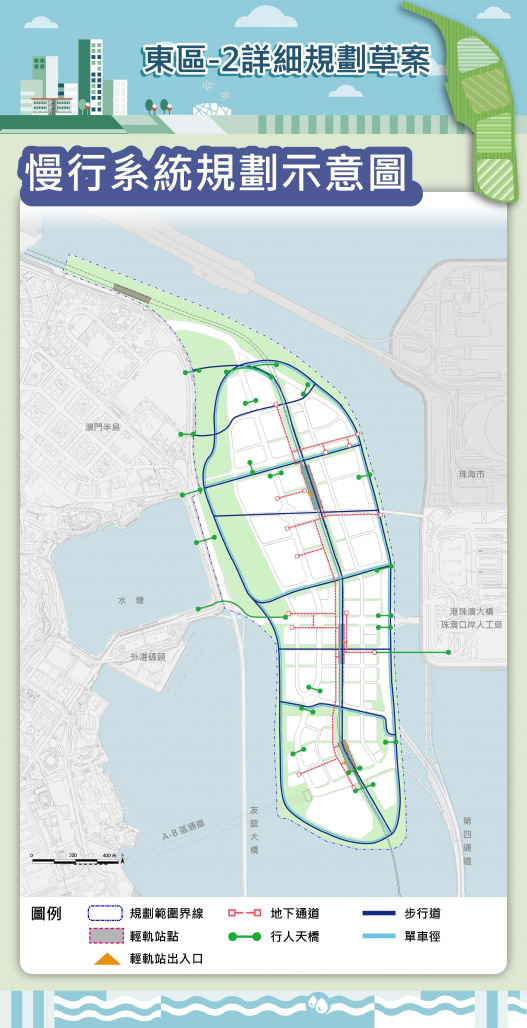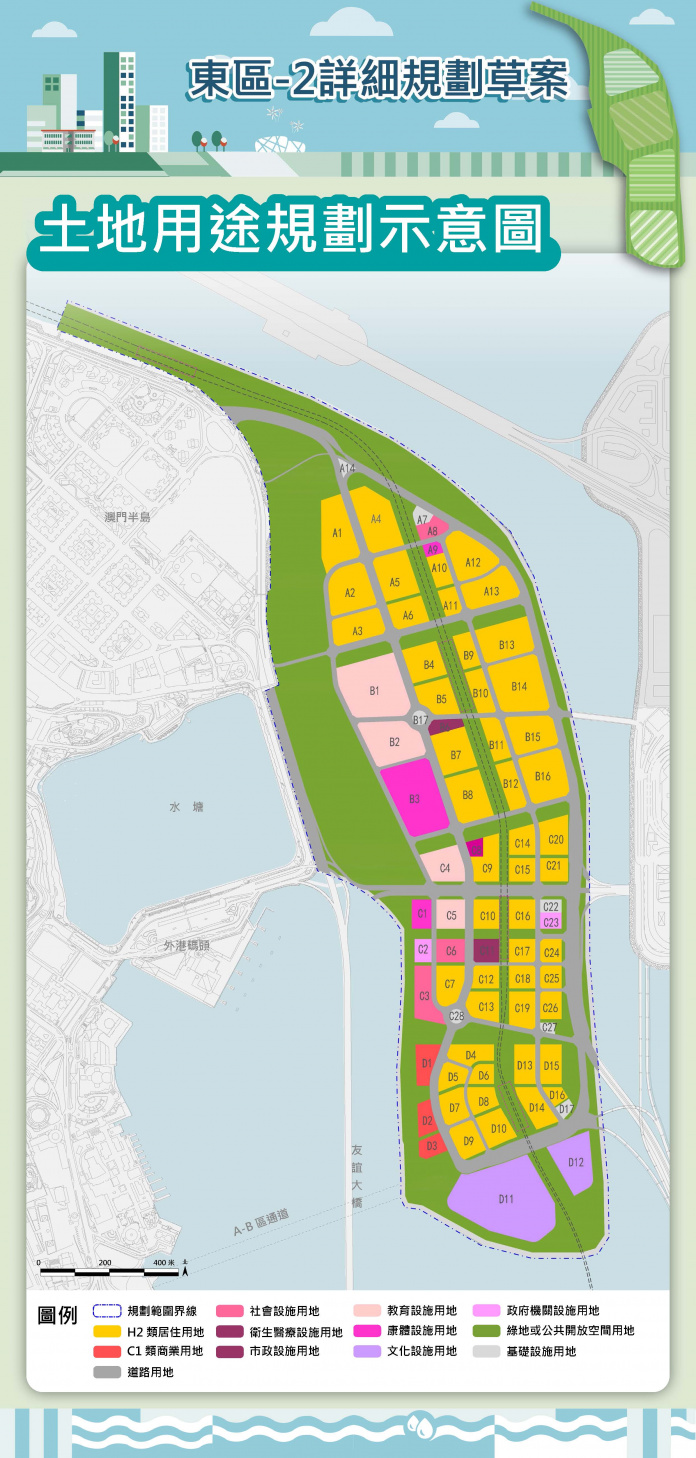A draft blueprint for the future of the city’s New Urban Zone Area A has raised concerns over traffic flow and business prospects in the reclaimed area after it was first presented this afternoon.
Presenting its details to the Urban Planning Committee for the first time, public works officials said that the 1.74-square-kilometre reclaimed land would accommodate a population of 96,000 and improve the city’s liveability as well as business prospects, and add greenery to the territory.
According to the plan that highlights a concept of so-called ‘gateway business circles’, three Light Rapid Transit stations to be built will host a concentration of small-and-medium businesses, supported by a network of underground walkways. However, areas earmarked for retail, F&B and MICE are expected to span 15,000 square metres of land only, or 0.9 per cent of the reclaimed area.
“There’ll just be three areas in total for business purposes. How will they support the proposed concept surrounding the Hong Kong-Zhuhai-Macau Bridge?” asked Kou Ngon Seng, a Urban Planning Committee member. “The plan suggested that underground space is used to develop business. There is indeed such space in Macau, yet quite limited, and it is not easy to develop it.”
In response to his concern, Land and Urban Construction Bureau Deputy Director Mak Tat Io said that apart from the three swaths of land, much of the business activity will take place around the LRT link and residential buildings. “The concept of linking businesses to LRT is common worldwide, yet relatively rare in Macau. It will allow us to promote this concept with Zone A,” he stressed. The government official also added that the south of Area A would play host to a cluster of cultural facilities, which he said would give rise to business opportunities in a cultural environment.
As the plan suggests, a Light Rapid Transit link with three stops will go through the Area A underground, with an accompanying network of bicycle lanes on its sides. Meanwhile, a gird of pathways and cycle lanes will also span the whole of the island.

However, such a proposed system did not prevent the participants from casting their doubt over how traffic could flow unhindered through the zone and into other parts of the Macau Peninsula. “Judging by the traffic on a rainy day, it’s usually jammed on the road,” doubted Leong Pou U, another member of the Committee.
Transport Bureau Deputy Director Chiang Ngoc Vai explained that on top of the three links connecting Area A to the Macau Peninsula, a passage would also be built between Area A and Area B, with the latter also a reclaimed piece of land to the south of the Macau Peninsula. Together with a forthcoming bridge from the local artificial island of the Hong Kong-Zhuhai-Macau Bridge to Taipa, he said that the network of links and passages would be capable of carrying a large volume of traffic there.
Some participants also called for the government to come up with a timeline as to how the blueprint would be executed. “Will there be a timeframe? Will all projects take place all in one go or in stages? It will provide a bigger picture for professionals and users alike. Residents will know which district they will move in first,” said Sio Chi Veng from the Macau Society of Civil and Structural Engineers. “There seems to be a lot for us to digest.”
However, Public Works Bureau (DSOP) officials present at the event stopped short of outlining a timeframe for the projects, yet emphasizing that a number of construction projects are now in full swing. “The construction of A1 has kicked off, and construction works will soon begin in A2 while preparations for A3 are basically complete,” said Luis Madeira de Carvalho, DSOP Deputy Director. “The construction works on all the four links between Zone A and Taipa have also started. Eight public housing projects are also underway, and would provide 8,300 flats upon completion.”
Authorities expected that a total of 32,000 flats would be built across Area A, with the north half of the reclaimed island “basically complete with public infrastructure” by 2024.
A 60-day public consultation exercise for the draft blueprint is now running until 5 December.




















